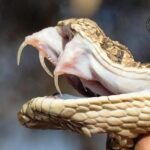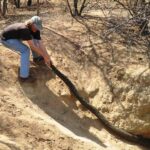Danger of buffaloes is overrated.
The ‘Cape buffalo’ (Syncerus caffer caffer) as a subspecies of the ‘African buffalo’ (Syncerus caffer) is the typical Southern African savannah biome buffalo species. The denomination of ‘African Black Death’ was coined by trophy hunters, who not fatally shot buffalos and, when hunting down the wounded animals, were attacked by them. Later, marketing folks liked to spice up their safari advertisements with this expression, and the name was stuck.
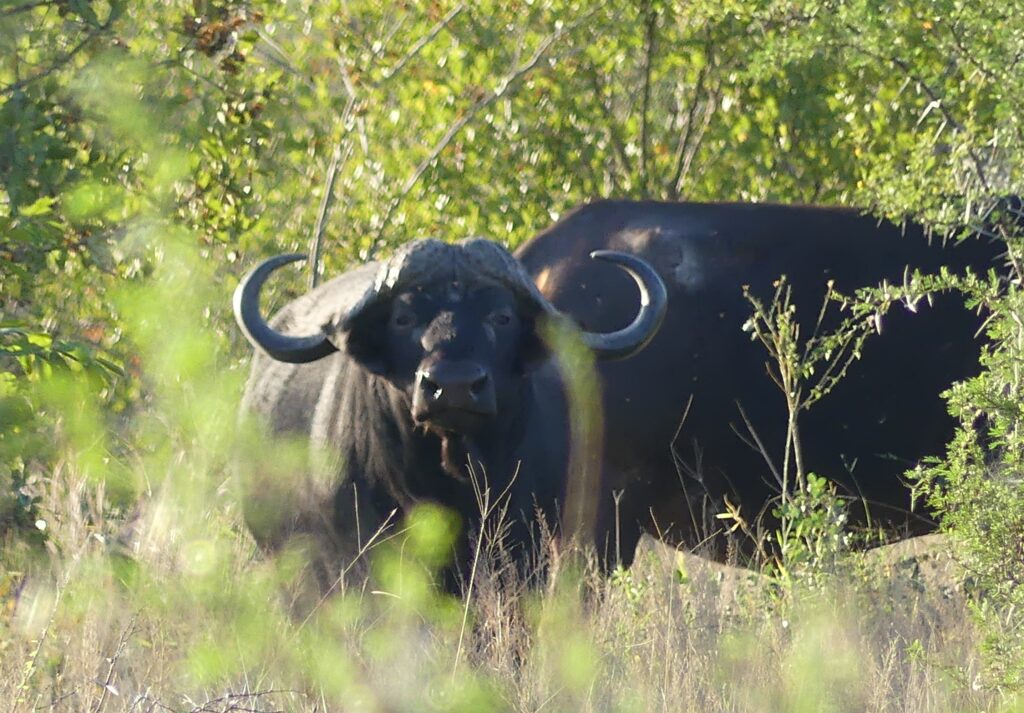
As with all other African Big Game, buffaloes are not dangerous to humans, but they will defend themselves if they get attacked, feel threatened, or are cornered. An African buffalo breeding herd can be compared to a herd of wild cattle. They roam around for food and water, send out pathfinders, and protect the vulnerable and young in their midst. For humans on foot, the only danger is getting in their path when moving—especially when stampeding.
Dagha-Boys are dangerous
Why are they called ‘Dagha-Boys’?
By the age of ten years onwards, when bulls are getting over the peak of their reproductive cycle, they are leaving voluntarily the breeding herds and wander around in either small groups or alone. They are not able anymore to follow the speed of the herd and, therefore, will remain stationary at places near water and soft vegetation. To get rid of parasites and to cool down, they wallow in mud and take on a cement-like color. Therefore, they are colloquially called ‘Dagha-Boys’ (‘Dagha’ means ‘mortar’ in the isiZulu language).
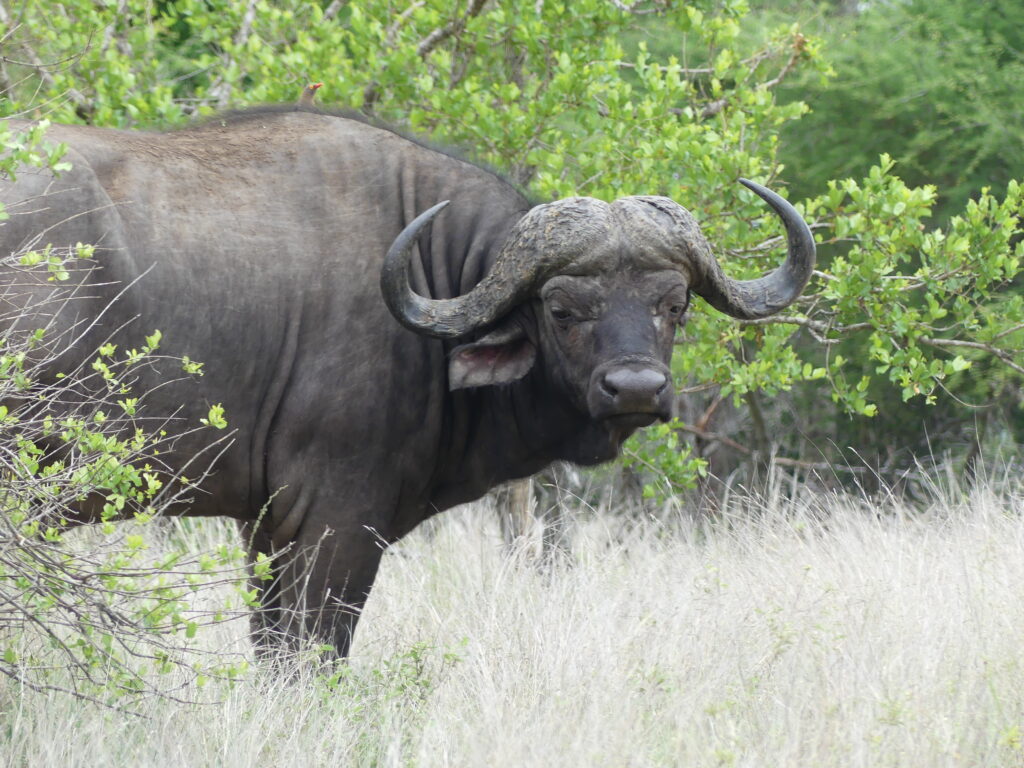
And these Dagha-Boys are dangerous to humans. The reason is simple: they have no protection from the herd anymore and are the preferred prey of lions. Therefore, they are always alert and itchy, trying to defend themselves against predators. There are two standard situations which lead to most accidents with humans (besides following a wounded buffalo):
.
Dagha-Boys on floodplains
Firstly, the buffalo is living on a plain near the water. Typically, there are large tufts of grass, wild date palms, and reed, and in between them, short, soft grasses to graze on. Predators (and humans) like to walk the short grass areas, walk around a reed island, and right in front of them lays a buff solemnly ruminating his cud. The buff is as surprised as the intruder, and he jumps up to his feet and attacks without due—bad stuff. There is no time and place to hide anymore. One of my mentors (Mr. Brendan Pienaar) was mangled in such a situation and survived only as his backup guide gave the buff an anchoring shot to the hip, enabling Brendan to get out under the buff and brain him finally.
Dagha-Boys next to a drainage line or pan
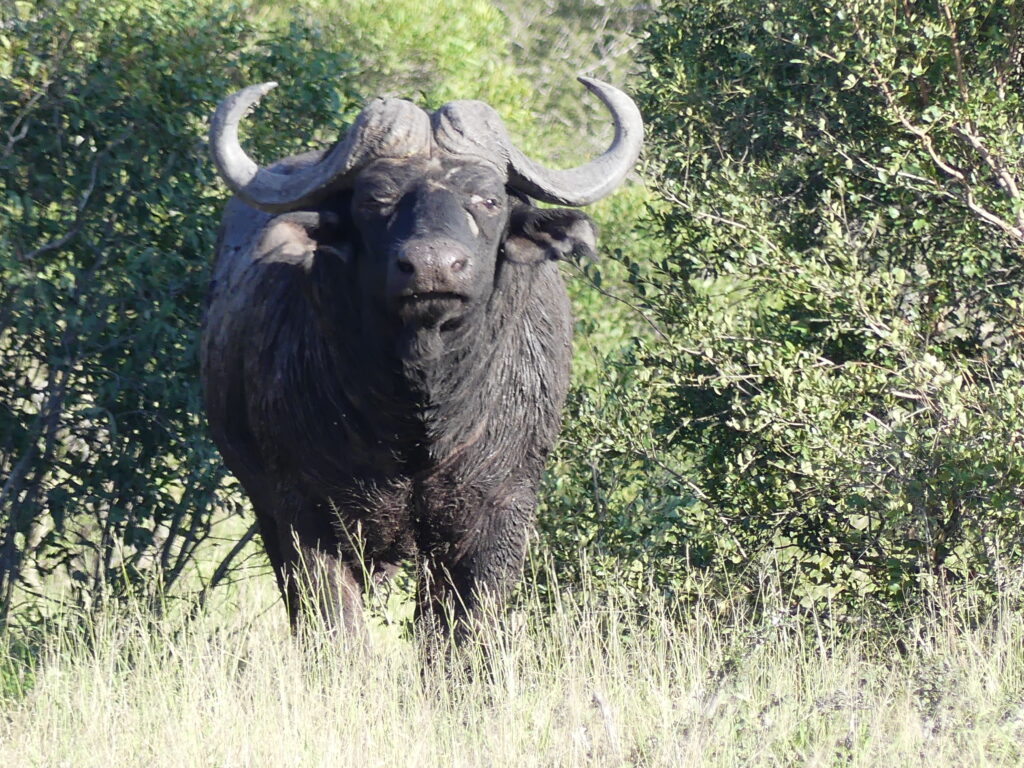
Secondly, buffaloes choose a more secure area to lay up. Most of the time, this will be a water-filled pan fringed by various trees and bushes somewhere inland and away from a river. There are fewer lions but also not much vegetation to hide. Therefore, he will choose a place where he is protected from three sides and can defend in front of him. Buffalo thorn trees are widespread and precisely what he needs. Strong thorns are defending him, and a deep shade by its soft leaves. He, therefore, will pull backward into the Buffalo-thorn until there is only a tunnel in front of him to defend.
An unsuspecting predator (maybe a human) walks to the pan to check out tracks or other reasons. The buff sees the intruder and immediately attacks him, which is far superior in its effects compared to defending himself. This is nasty stuff, as there is no time for any helpful reaction anymore. The only possibility left will be shooting, which every naturalist and conservationist wants to avoid. Another one of my mentors (Mr. Devon Myers) came into exactly such a situation. But he brained the buff with one shot. The attack started at a distance of about 10 meters. Dev shot when the buff was three meters away. Then he stepped sidewards, and by the movement’s momentum, the already dead buff fell two meters behind him.
Again, it is not the buff’s mistake that he gets threatened by an intruder and only defends himself. Man is the intruder because nature is neutral.
Lessons learned about Cape buffalos.
- For intentionally walking in buffalo country, it is best to make regular noises in order not to surprise big game. That way you will not see much game, but also will unlikely be attacked.
- If attacked by an African buffalo, the only alternatives (except shooting) are running away and climbing a tree. Buffalos will never mock-charge; they always charge seriously.
- ‘Never run – whatever you do’ is a hard and fast rule for lions, leopards, and rhinos. And at an elephant mock charge. But not for buffs.
Further readings about Dangerous Game in Southern Africa on this website:
Lion behavior – so different by day and night
Recipe for disaster – elephant bulls in musth
Spotted beauties: Leopards in Southern Africa
Danger posed by Nile crocodiles
Spotted hyenas are successful hunters
Why are Hippos dangerous on land?
.


